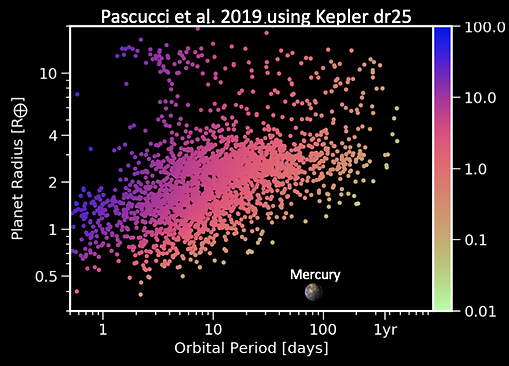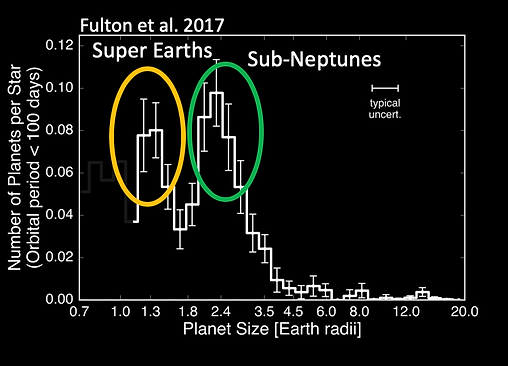
Current Research: Young Planets with TESS
My current research focuses on the detection and characterization of close-in, transiting young exoplanets with the Transiting Exoplanet Sky Satellite (TESS) with pterodactyls, a Python-based code that I built in order to search for and vet close-in transiting planets in young clusters.

Why Study Young Exoplanets?
Between 2009 and 2013, NASA's (now retired) Kepler Space Telescope looked for transiting exoplanets around Gyr-old stars with the goal of finding an Earth-sized planet orbiting a sun-like star at the same orbital distance at which our Earth orbits the Sun.

While Kepler wasn't able to meet its goal of finding an Earth analogue, it discovered more than 2600 confirmed exoplanets with an additional ~2900 that await confirmation.
The two main features of Kepler's finds are:
-
A dearth of sub-Neptune to Neptune planets within an orbital period of 4 days, also known as the Hot Neptune Desert (Beaugé & Nesvorny 2013). This feature cannot be explained due to observation biases since we do discover smaller planets at the same orbital periods.
-
An abundance of planets between the sizes of Earth and Neptune. Most of these planets orbited their stars closer than Mercury orbits our Sun. A closer look at this population led to the discovery of the Radius valley (Fulton et al. 2017) which divides this population into two specific peaks: the Super Earths and the sub-Neptunes.
space.com


Both, the Radius Valley and the Hot Neptune Desert, are hypothesized to be most likely to be due to evolutionary processes such as photoevaporation due to high energy photons and/or due to core-powered mass loss.
Given that these Gyr-old features are due to the evolution of these planets, what did the primordial population of close-in exoplanets look like? And how did these planets evolve with time?
With the Transiting Exoplanet Sky Satellite (TESS) mission, we now have the unique opportunity to detect planets around stars in young clusters and associations, providing a sample much closer in time to the primordial short-period planet population.

nasa.gov
In fact, recent detections of young planets with K2 and TESS fill the gaps in Kepler’s radius-period plane and have further solidified the hypothesis that these features are indeed evolutionary.

In conclusion, by comparing the population of young planets detecting using TESS and Gyr-old population detected by Kepler, we can better understand what these close-in exoplanets looked like when they formed and how they evolved with time to their current form.